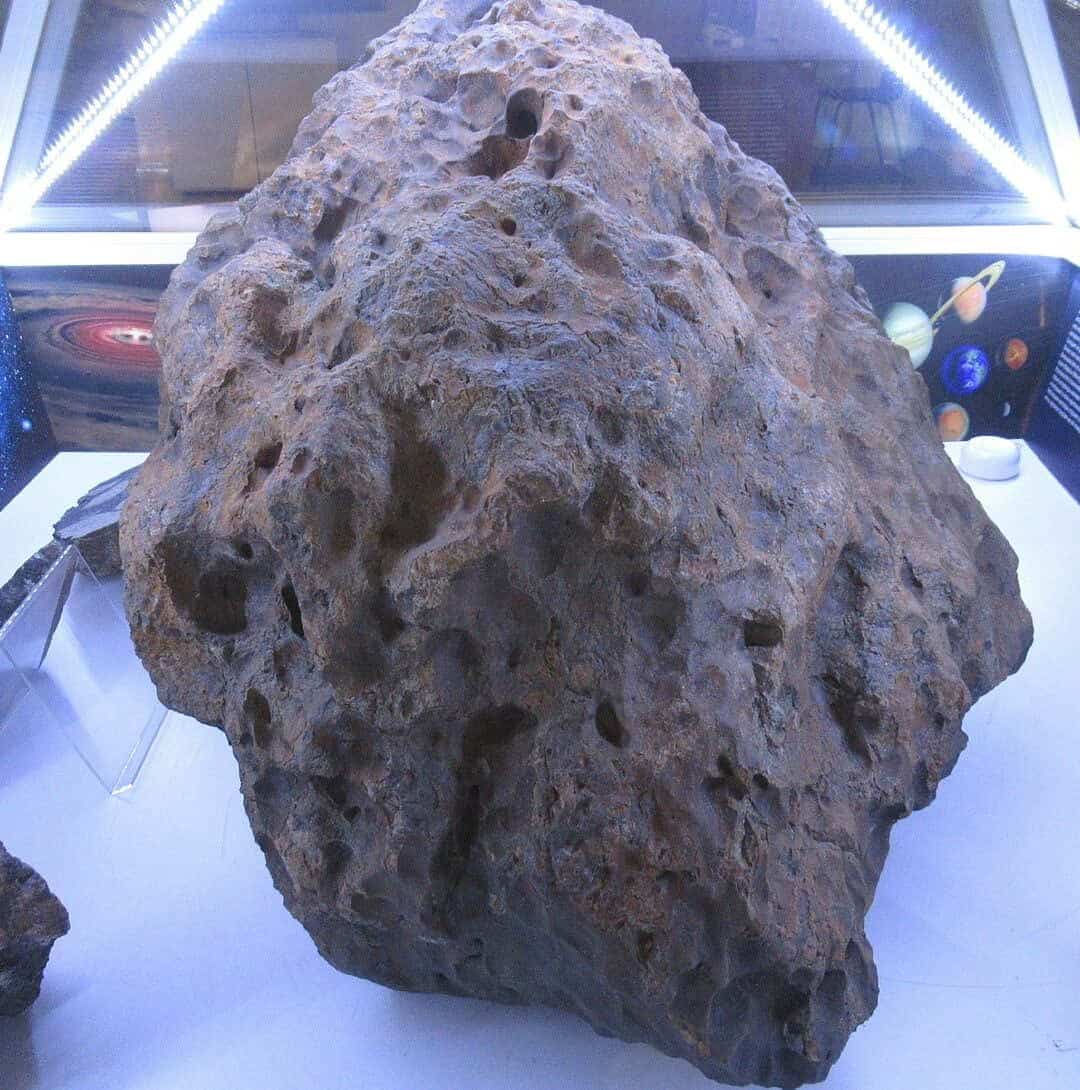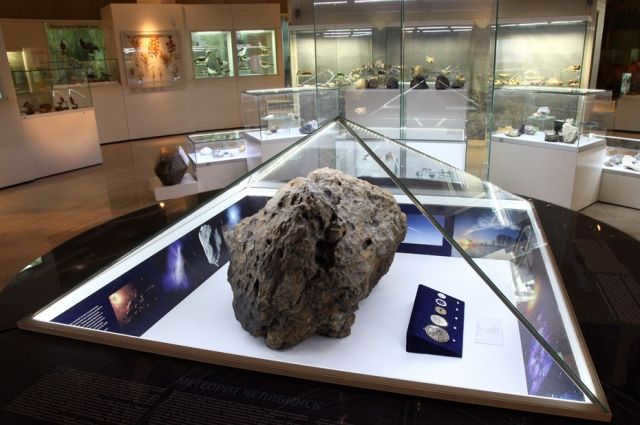
It has been two years since the Chelyabinsk meteorite fell. On February 15, 2013, at 9:20 am, the meteorite entered the atmosphere at a steep angle and left a distinct white trail behind. The “tail” of the bolide was captured by thousands of photo and video cameras, and the actual space object was retrieved from the bottom of the lake six months later. Russian and international astrophysicists who quickly began studying the celestial body are still grappling with its mysteries.
A Stone Worth Billions
In the skies above the Chelyabinsk region, a meteorite exploded, shattering into fragments, with the largest piece crashing into Lake Chebarkul. The force of the explosion was equivalent to 500 kilotons of TNT. The resulting shockwave shattered windows in buildings across various districts of Chelyabinsk. Over a thousand people sought medical attention for injuries caused by flying debris. The total cost of the damage exceeded 1 billion rubles. Funds for repairing windows and walls in homes, factories, and municipal buildings were provided by the federal budget, while insurance companies in the city also compensated the victims.
“I was in my workshop in Chelyabinsk when the meteorite fell. Fortunately, I was able to capture some photographs of the meteorite’s tail. Thankfully, none of my loved ones were injured that day. However, many of my friends experienced material damage from the impact,” shared Albert Rastiapin, an artist interviewed by AiF-Chelyabinsk. In response to this event, Rastiapin went on to create a four-meter painting that depicts the encounter between the South Ural capital and this celestial “alien”.
Latest picture
Searches on “Yandex” regarding the events that occurred in the tough city of Chelyabinsk, viral images, and advertisements claiming to sell fragments of the meteorite have inundated the online world.
Furthermore, following the impact of a celestial object in Lake Chebarkul, a team of scientists from the United States published a captivating three-minute video showcasing an animated 3D simulation of the trajectory of the Chelyabinsk meteorite. Subsequently, their Japanese counterparts joined forces and presented their own interpretation of the event.
The sci-fi blockbuster “Edge of the Future” used images of a massive explosion of a celestial object over a bustling city, starring Tom Cruise.
The movie begins with the premise of a meteorite crash, which leads to an alien invasion on Earth. Interestingly, snippets from Chelyabinsk car video recordings are shown, emphasizing the connection between the meteorite and the apocalypse. However, many reputable scientists argue that the residents of Chelyabinsk were actually fortunate to survive the events of February 15.
We are destined to go extinct, just like the dinosaurs
In order to retrieve the meteorite that had fallen to the bottom of the lake, it took an expenditure of 3 million rubles. Divers from Yekaterinburg commenced their work six months after the incident, utilizing an echo sounder to survey the lake’s floor. Eventually, they came across two fragments. The first fragment, measuring a mere 15 centimeters in diameter, initially raised doubts among scientists as to whether it was indeed a celestial object. However, their suspicions were dispelled when they found the largest fragment of the bolide, weighing over 600 kg, at a depth of 20 meters. This significant find was subsequently handed over to scientists for further examination.
Scientists have discovered that the celestial object belongs to the LL5 class of ordinary chondrites, meaning it is a stone meteorite. Its original mass was 10,000 tons with a diameter of 17 meters. It entered the atmosphere at a velocity of approximately 18 km/s and disintegrated 32.5 seconds later.
NASA astrophysicist Nikolai Gorkavy detected a signal from the dust cloud left by the Chelyabinsk bolide in the Suomi satellite data. This dust remained in the Earth’s atmosphere for a month, and according to the scientist, posed a much greater danger to humans than the shockwave from the meteorite impact.
“The aftermath of atmospheric dust deposition results in extended winters spanning multiple years, posing a greater threat than the initial impact event. Approximately 65 million years ago, when a 10-kilometer asteroid crashed in Central America, the dinosaurs did not survive long enough for the atmosphere to clear, succumbing to the freezing temperatures. Visit a museum and observe the skeletal remains of these creatures who overlooked the importance of astronomy!” – Nikolai Gorkavy expressed in his blog.
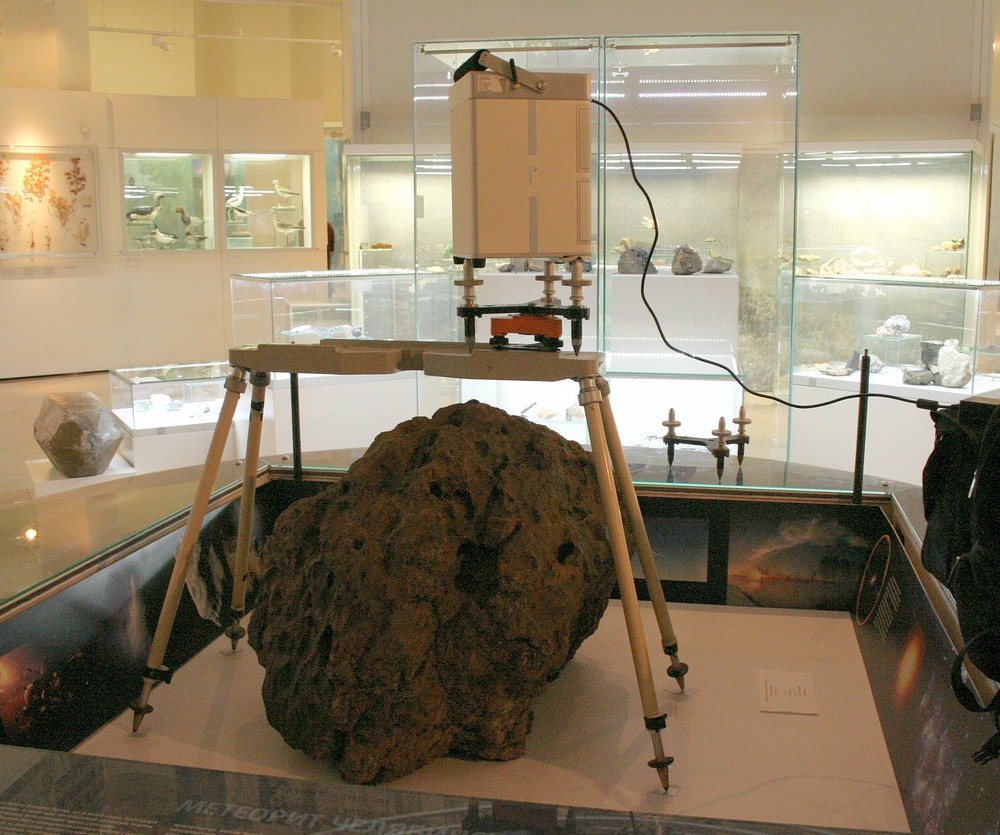
However, ongoing research is being conducted on the extraterrestrial being. For the past two years, scientists have been unable to determine the origin of the dark spots found on the “Chelyabinsk” meteorite, as no such markings have been observed on other chondrites.
According to Victor Grokhovsky, a member of the Committee on Meteorites of the Russian Academy of Sciences and a professor at the Institute of Physics and Technology of the Ural Federal University, the body of the Chelyabinsk meteorite exhibits these dark spots. The composition of the meteorite is heterogeneous, and so far, six different structural varieties have been identified through extensive analysis, some of which have never been encountered before.
Yet another enigma is how the celestial object arrived on Earth and what transpired during its journey.
According to the professor, “The meteorite exhibits unusually low durability, particularly in its core. Therefore, it would be more accurate to describe its fate in the atmosphere as destruction, similar to the collapse of a pile of debris.”
Meanwhile, Grokhovsky conceded that the examination of the Chelyabinsk meteorite could extend beyond a year. Russia lacks the essential equipment for this task, and conducting research in foreign laboratories necessitates a significant investment of both time and money.
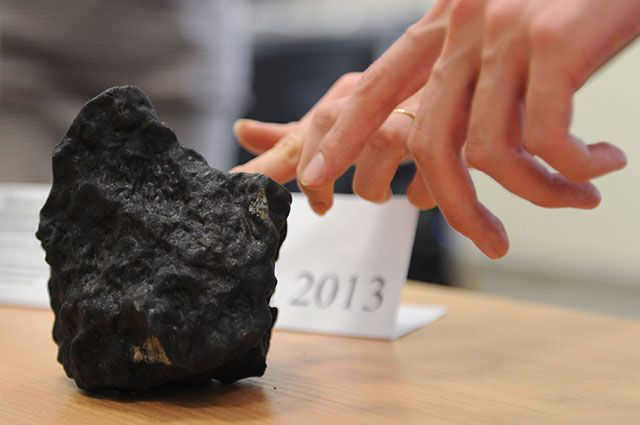
During the 20th century, the concept of a cataclysmic event caused by a celestial object colliding with Earth was a popular theme in science fiction literature and disaster movies.
"Somewhere out in the vastness of space, a brilliant blue meteorite hurtles through the cosmos."
As the new millennium approached, and with it, widespread speculation about the “end of the world,” Hollywood seized the opportunity to fully explore this theme.
In 1998, two films were released that depicted humanity’s struggle for survival against massive asteroids: “Armageddon,” directed by Michael Bay, and “Deep Impact,” directed by Mimi Leder.
Despite the lack of a real-life “killer asteroid” event in 2000, people’s fears subsided for a time.
The topic of cosmic disaster regained relevance in 2012, specifically in December, when numerous individuals were anticipating the “Mayan calendar end of the world.”
Once again, the apocalypse failed to materialize, and just as humanity was contemplating what other horrors to predict, an unexpected event occurred.
It arrived without warning, earning the name “Chelyabinsk” only after it had already taken place.
440 Kilotons: The Morning Explosion
On the morning of February 15, 2013, an asteroid made its way into the Earth’s atmosphere at a staggering speed of approximately 18 km/s. According to NASA’s estimations, this celestial body had a diameter of 17 meters and weighed around 10,000 tons. After an incredibly awe-inspiring journey through the atmosphere for 32.5 seconds, it disintegrated at an altitude of roughly 20 kilometers above the Russian city of Chelyabinsk.
The energy released during the breakup of this celestial object was estimated to be between 100 and 200 kilotons in TNT equivalent, as reported by the Russian Academy of Sciences. However, NASA experts were even more generous in their calculations, stating that the explosion released a force of 440 kilotons, which is equivalent to the impact of 20 atomic bombs.
At approximately 9:20 a.m. in Chelyabinsk, an unprecedented celestial event unfolded in the sky, reminiscent of the historic visitation of the Tunguska meteorite.
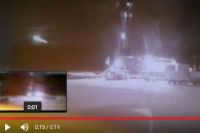
“There was an extraordinary brightness and intense heat, and then… and then… the ears popped.”
The glass in the houses shattered and the furniture collapsed, while on forums and social networks, the first and most heartfelt impressions of the residents of Chelyabinsk started to appear.
“My heart was racing, probably at 200 beats per minute. I witnessed this terrifying flash of scarlet-orange color! My eyes are still stinging. The neighboring houses had their windows blown out by the impact! I turned off all the lights. I placed the children on the couch and waited. My goodness. I thought it was all over – that the war had begun,” shared one of the shocked women.
On a Chelyabinsk forum, a girl with the username Long Prelinnye Predlinnye Zakazanie shared her own experience: “At first, there was a flash. I was curious about the headlights of a passing car. Then, there was such a loud explosion that my ears popped and the windows shook.”
Even the well-known owner of the Magnit chain of stores, Sergei Galitsky, had something to say: “A significant meteorite crashed down, causing our hypermarket in Yemanzhelinsk to have its windows blown out and the roof to shake. There was a powerful shockwave.”
“It wasn’t an airplane, but a meteorite. There was an unreal brightness and heat, and then, even my ears popped and the windows in the office shattered,” emotionally described what I witnessed.

"Yes, it seems to be some kind of drug addicts."
"Around 9:23 p.m., while I was pouring tea in the kitchen, something strange happened outside the window. There was a sudden bright flash of white light, followed by a loud noise. "Atomic bomb? Why am I still alive? 🙂 Then I noticed some smoke in the sky towards the south, – wrote a user named vedmed1969 from Chelyabinsk in his blog on ZhJ. Marina called and said, “Daddy, a plane fell”. Should I go and check it out? Let’s see what kind of airplane it is. "
“While I was working, I happened to be standing near the window when suddenly a brilliant flash of light illuminated the entire office. I quickly turned around and was startled to see a fireball accompanied by a trail of fire silently gliding right above us. Our office, which is located next to Lightning on Ryleeva, was in the direct path of this eerie phenomenon. The object seemed to be moving from the Leninsky district towards AMZ. It was an incredibly unsettling sight. About a minute later, we heard several explosions. Fortunately, the windows made with Euro glass survived the impact, but the regular windows were blown out. This was unlike anything I had ever witnessed before, and I am certain that it was not a rocket or an airplane. It strongly resembled a meteorite,” recounted Marina, a user who provided a detailed description.
“At the school on Dovatora Street, all the windows have been shattered and the front door is even bent inward. The children were fortunate as they were in the middle of a break that had started about 7 minutes prior, so there were hardly any students near the windows or at their desks. Consequently, there were only a few individuals who sustained cuts from the broken glass,” reported “Mamadetok”.
“I’m currently lying on the couch, and suddenly it becomes bright like sunlight coming in through the window. I wonder what kind of car is shining on the 15th floor,” Zyu shared his impressions.
“The tripod cars are approaching. Run! Save yourselves!” Gavor ironically warned his fellow countrymen, referring to the alien tripod cars from the novel “War of the Worlds” and its film adaptation.
In Chelyabinsk, there were people who were not disturbed by the meteorite. “The most ingenious theory came from a neighboring pensioner, just four minutes after the explosion. “Yes, it must be some kind of drug addicts,” user AKolesova wrote on a social network.
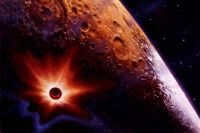
1 billion rubles in damage, over 1,600 casualties
The “space enthusiasts” had a blast. The total cost of the destruction caused by the shockwave reached approximately 1 billion rubles. Emergency measures were implemented from February 15 to March 5, 2013 in the Krasnoarmeysky, Korkinsky, and Uvelsky districts of the Chelyabinsk region. For a period of time, the glazier profession became the most prestigious and sought-after in Chelyabinsk, as glass became a rare commodity.
According to medical professionals, 1,613 individuals were affected, with over a hundred requiring hospitalization. The majority of victims suffered injuries from shattered glass, while many also experienced hearing damage. Fortunately, there were no fatalities.
It is unimaginable to contemplate what could have transpired if the “extraterrestrial visitor” had successfully reached the Earth’s surface instead of disintegrating at an altitude of 20 kilometers. It is one thing to witness such an event in a movie, but an entirely different experience to live through it firsthand.
“Decepticons, Lada-Kalina.”
However, it is possible that the city of Chelyabinsk has never gained as much global recognition as it did in February 2013. Videos captured by Russian dashcams, documenting the asteroid’s entry into the Earth’s atmosphere, garnered millions of views. The composure displayed by the locals astonished both Americans and Europeans. Yet, as we are aware, the Russians were undoubtedly concerned as well. Nevertheless, it is difficult to fathom the potential consequences if a similar incident were to occur in the skies above Chicago.
Our people quickly regained their composure. By the end of February 15, 2013, the internet was already buzzing with jokes about the meteorite:
“The people of Chelyabinsk are so tough that they extract metal from outer space.”
“A meteorite has landed in the Chelyabinsk region. Look out for ‘Lada-Kalina’ Decepticons cruising through your streets!”
“Comment on the video ‘Meteorite fall in Chelyabinsk’: “Awesome! The Christmas tree in Chelyabinsk is still up.”
“The residents of Chelyabinsk watched in horror as the meteorite approached.”
“The Ministry of Emergency Situations has declared the Chelyabinsk region as an area affected by meteorism.”
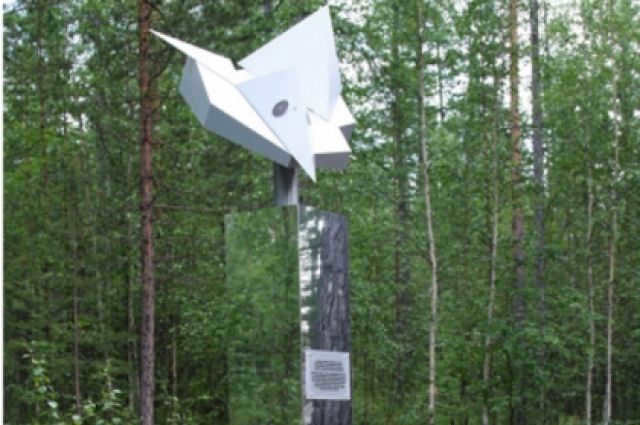

Why wasn’t it noticed?
Those who were more serious asked: how did it happen that this flyby went unnoticed?
The answer is simple – in the grand scheme of things, the asteroid that crashed over Chelyabinsk was not a giant. Planetary astronomers track asteroids that have the potential to cause global damage to the planet, and there is no guarantee that all objects posing such a threat have been “calculated”.
As for the smaller ones, they are sometimes only recognized when they complete their journey in the Earth’s atmosphere. And in these cases, no alarms will help; we can only hope for the best.
Following the initial shock, local residents and scientists embarked on a quest to locate the extraterrestrial material that had made contact with the Earth’s surface. According to eyewitness accounts, the largest fragments came crashing down into Lake Chebarkul.
In the autumn of 2013, search teams successfully retrieved several sizable pieces of meteoritic matter from the depths of the lake, amounting to a combined weight exceeding 600 kg.
The Russian scientific community officially bestowed the name “Chelyabinsk” upon the meteorite, which was subsequently recorded in the International Catalog of Meteorites.
A portion of the meteoric substance was utilized in the production of awards for the Sochi 2014 Olympics. These prestigious accolades were bestowed upon athletes who emerged victorious in their respective events on the first anniversary of the meteorite’s descent, which occurred on February 15, 2014.
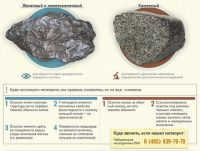
Unrealized: Why Chelyabinsk Failed to Become the “Meteorite Capital”
At a certain point, it appeared that Chelyabinsk and its surrounding area would forever retain the title of the “meteorite capital.” However, nothing remains constant beneath the lunar surface – the excitement gradually waned.
During the initial months, something extraordinary was taking place. The image of grandmothers sitting by the Russian highways, selling mushrooms, berries, vegetables, and pickles, is well-known. In the summer of 2013, dignified grandmothers in the Chelyabinsk region also set up shop along the highways, trading meteorites. The locals would go fishing and collect stones that they believed to be part of the meteorite, which they then sold to passing travelers.
Over time, the business gradually declined. Currently, in Chelyabinsk, it is possible to purchase pieces of a meteorite through official channels. A sizeable fragment of the cosmic traveler can be observed at the local museum of local history.
After five years, the residents of Chelyabinsk themselves acknowledge that their attempt to leverage the global excitement to attract tourists from around the world was unsuccessful. The bureaucratic process proved to be cumbersome, and individuals who possessed genuine enthusiasm and influence were uninterested in the narrative.
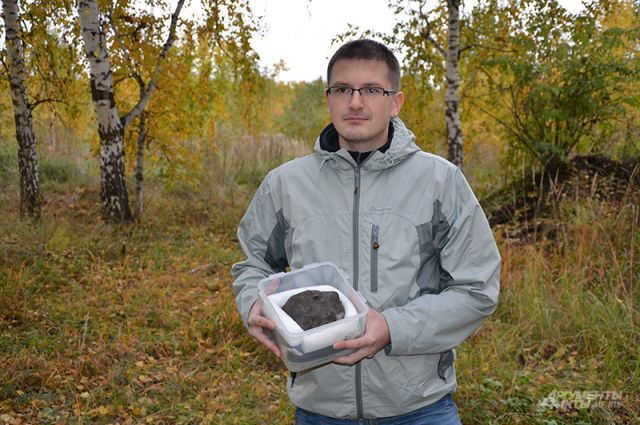
The “Meteorite” cake, which was introduced by local bakers “in the heat of the moment”, has been discontinued due to lack of demand.
The monumental event of planetary magnitude, which occurs only once every century, has slowly faded away in the past five years, failing to turn Chelyabinsk into the “meteorite capital of the world” and bring additional revenue to the city.
Entrepreneurial foreigners, who make millions by showcasing various pseudo-historical ruins to gullible tourists, cannot comprehend our situation.
The sound effects arrived a few minutes late, but left a lasting impression. The sudden and terrifying arrival of the shock wave caused windows to shatter, particularly in schools, kindergartens, public buildings, and stores with large panes of glass. Dust, small fragments of paint, and other debris rushed into buildings through the ventilation system, window cracks, and chimneys, which were already rare in the city. In some places, doors were torn off, and at the Chelyabinsk Zinc Plant, a building’s roof collapsed and part of a wall blew off.
Following the shock wave, flocks of birds took flight and the howls of dogs and car sirens filled the air.
The response of the population was diverse – some individuals hastily fled their buildings and gathered in the courtyard, partially dressed and carrying important documents, as they had been taught in school. Others continued with their daily activities as if nothing had happened, either working or driving around town (transportation proceeded without any issues, especially the shuttle buses). Meanwhile, students were either dismissed from their classes or directed to assemble in designated classrooms.
Reflecting on the situation from a present perspective, I can confidently state the following: the citizens of Chelyabinsk were like a disturbed beehive, with many individuals looking up at the sky for the first time in a long while. However, it was difficult to make any definitive decisions at that time – the sun was peacefully shining, the overall damage to the city was minimal, and the streets were not filled with injured people – besides, no official information had been released yet. Reconnaissance planes were flying below the trail left by the meteorite, which could be seen due to the inversion effect…
What was the cause of the panic? What were the potential dangers (radiation, chemical pollution, viruses, nuclear war)? What actions should be taken?
Due to a lack of information, various rumors began to circulate: planes exploding, accidental missile explosions, nuclear blasts… The anxiety among citizens was heightened by the fact that cellular communication was almost completely unavailable for several hours, leaving people unable to find out the fate of their friends and family.
After an hour or two, information finally appeared on television about a meteor shower, albeit not entirely accurate, but correctly identifying the source of the disasters.
Overview of the “Chelyabinsk” meteorite fall
On February 15, 2013, at 9:20 local time, there was a powerful explosion in the sky above Chelyabinsk. Further investigation revealed that the explosion’s epicenter was approximately 40 km south, near the town of Emangelinsk. The explosion was preceded by a brilliant flash, a dazzling white with a hint of blue. According to the scientific journal “Science,” the flash reached its maximum brightness at -27.3 stellar magnitude, making it 30 times brighter than the Sun. At the time of entry into the Earth’s atmosphere, the meteorite had a mass of about 13,000 tons and a cross-section of 19.8 m. [O.P. Popova et al., // “Science”, 2013. – vol.342 P.1069-1073].
Emangelinsk and the surrounding settlements experienced damage to more than 7,000 buildings. Official reports indicate that 1,613 individuals sought medical assistance.
On the evening of February 15, reports emerged regarding the impact of a significant celestial body in Lake Chebarkul, located approximately 80 km west of Chelyabinsk, near the Krutik Peninsula.
Investigation at Lake Chebarkul
At that time, it had not been officially confirmed that the opening in the ice on Lake Chebarkul was a direct result of a meteorite impact. Additionally, the authorities, including the police and the Ministry of Emergency Situations, prohibited scientific access to the site for the initial three days following the meteorite incident, resulting in the loss of valuable information related to the event.
An expedition led by V.I. Grokhovsky from Ekaterinburg’s Ural Federal University arrived at Lake Chebarkul on February 17 and discovered a meteorite-chondrite, a substance from outer space, by lifting a stone material from the lake ice.
The Chelyabinsk regional branch of RGO also conducted an expedition, including students from Chelyabinsk State Pedagogical University, which began research on February 16 to examine the state of the water in Lake Chebarkul.
chehi_chebarkul-029.jpg
Reword the text to make it unique, using the English language and preserving the HTML markup:
chehi_chebarkul-029.jpg
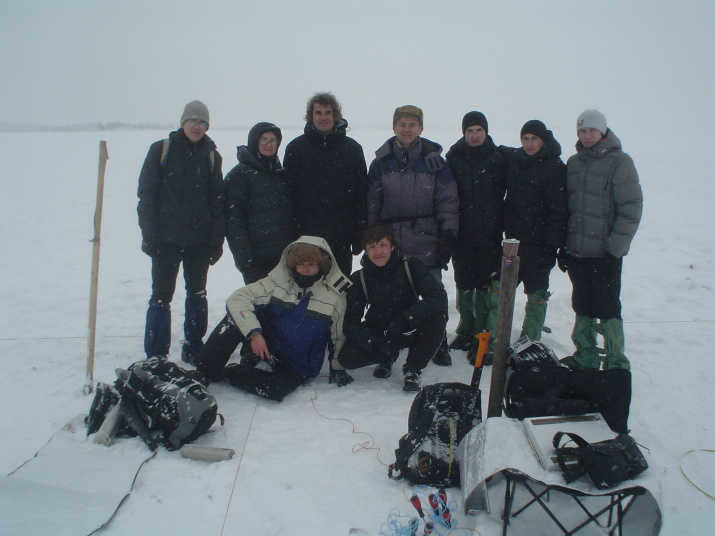
As per the accounts of the initial witnesses, the ice hole had a nearly perfect circular shape with a diameter of approximately 8 meters. Bubbles were actively emerging from the southwestern part of the ice hole, and even after 4 hours since its formation (as evidenced by the photos), the ice hole had not completely frozen over yet, with only a thin layer of ice known as nilas being present. On February 16, we collected water samples at various depths along a vertical line located 100 meters away from the ice hole.
Our expedition, which was the first among scientific groups, successfully retrieved meteoric material from the lake bottom on February 26. This marked the first time that impact structures were discovered on the lower edge of the ice, and it also allowed us to analyze the distribution of heavy metals in the sediment at the bottom of the lake.
The study of ice by the Chelyabinsk regional branch of the Society was interrupted on March 17, 2013, when they managed to observe the impact of a large meteorite fragment on the edge of the ice, just 50 meters away from the impact crater.
Preliminary findings from the research
The international scientific conference “Asteroids and Comets. Chelyabinsk event and the study of meteorite fall into Lake Chebarkul” took place on June 21-22, 2013 in Chebarkul. The conference was organized with the participation of the Chelyabinsk Regional Branch of the Society. It aimed to present and discuss the initial findings regarding the cosmic phenomenon. The conference covered various topics, including the chemical composition and physical properties of the meteorite, its flight trajectory, and the fallout field. Additionally, the conference addressed issues related to Earth’s space security and the consequences of the meteorite’s fall into Lake Chebarkul. The conference proceedings consisted of 29 articles, out of which 20 articles focused specifically on the Chelyabinsk meteorite. The articles were authored by a total of 104 contributors.
knigi-chelrgo_4.jpg
can be rephrased as
The book of Chelrgo, volume 4
.
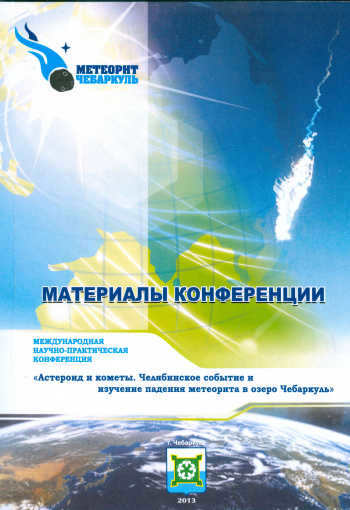
In the month of July in the year 2013, a special buoy was carefully positioned on the surface of Lake Chebarkul. This buoy was adorned with a plaque, which served as a reminder of the momentous occasion that occurred at this very location. It was an event that shook the tranquility of the lake and propelled it into the global spotlight, forever etching its name in the annals of history.
The task of the divers was not an easy one – working at a depth of 10 meters, they found themselves in complete darkness due to the silt that easily rose from the bottom. This silt had spread throughout the water column from surface to bottom since mid-September. In the summer of 2013, Lake Chebarkul experienced an unusually high level of silt.
On October 11, the search team “Yazya” had a stroke of luck – they found the main body of the meteorite. Then, on October 16, the official retrieval of the meteorite took place. The next day, October 17, it was transported to Chelyabinsk and placed in the local state museum.
In our view, the meteorite should have been handled and transported in a different manner – with the presence of experts and scientists at every stage of the meteorite’s extraction from the sediment. However, the main part of the meteorite was successfully discovered, removed, and put on display, accessible to both spectators and researchers.
During the initial weeks and months, visits to the Local History Museum skyrocketed – everyone wanted to witness firsthand the small yet remarkably heavy (approximately 650 kilograms) fragment of the formidable extraterrestrial visitor that thundered across Chelyabinsk and its environs, leaving significant damage in its wake.
5i6b7269.jpg
can be paraphrased as “Image 5i6b7269.jpg” or “The photo titled 5i6b7269.jpg” or “A picture named 5i6b7269.jpg”.
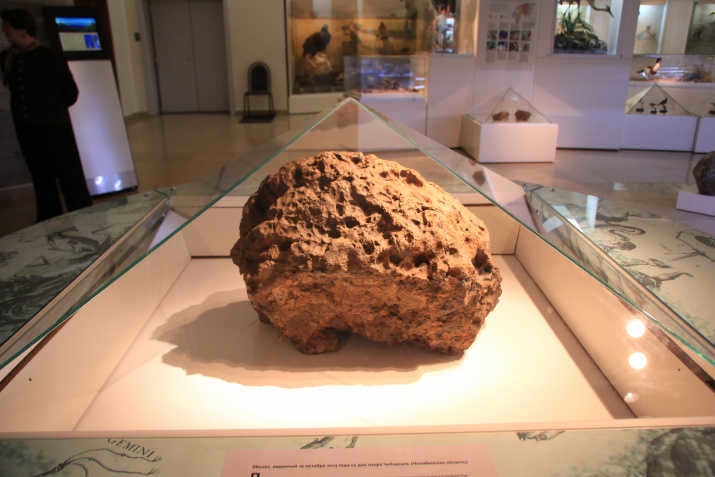
On February 14, 2014, the Chelyabinsk State Museum of Local Lore hosted the national scientific conference “Meteorite ‘Chelyabinsk’ – one year on Earth”. A total of 51 articles were presented, written by 176 authors. The following day, on February 15, conference participants gathered at the opening ceremony of the memorial stele located on the shores of Lake Chebarkul.
A recreation of the meteorite’s impact into Lake Chebarkul
An explosion and impact caused a large hole, measuring up to 8 meters in diameter, in the ice of the lake. This resulted in cracks forming, which extended outwards from the hole. Water shot up from the hole, forming a fountain-like column, with most of it falling towards the west. We observed a layer of whitish ice, formed from the water-soaked snow, up to 15 meters away from the center of the hole. Some of the ice was propelled in a southwesterly direction, while some of it was thrown under the ice and froze.
The meteorite then began to move away from the hole it created in the ice, making it harder to track its movement.
It appears that the meteorite, descending at a high velocity and colliding with the ice, fragmented into separate pieces; a significant portion of the meteorite body, bouncing off the water (possibly the bottom sediments?), resurfaced from the depths and struck the ice 50 meters away from the center of the ice hole. The meteorite was unable to penetrate the ice cover once again – it descended once more, burying itself into the bottom sediments.
The exact total mass of the “Chebarkul fragment” remains uncertain. When the largest fragment was lifted on October 16, 2013, its weight was determined to be around 650 kg. The overall shape of the fragments suggests an initial mass of approximately 800-900 kg.
Regarding this matter, the calculations made by advocates of the comet theory or those supporting high velocities of the meteorite, which determined the mass of the fragment that landed in Lake Chebarkul at 17-23 kg, have become irrelevant.
Preserve Lake Chebarkul
The extraordinary event of the 21st century, the Chelyabinsk meteorite fall, undoubtedly attracts curious individuals to the locations where its fragments fell. However, the meteorite also serves as a test of human wisdom. It is not worth having a celestial boulder trampled and excavated by “prospectors” in fields and forests, or having swarms of motor boats pollute the lake’s drinking water.
Regrettably, the lifting of meteorite fragments, both in an organized and unorganized manner, has already led to an escalated depletion of nutrients from the sediment at the bottom, subsequently releasing them into the aquatic ecosystem. This understanding stands as the most significant outcome derived from the monitoring research conducted during our 2013 expedition.
meteorit_oz.-chebarkul-002.jpg
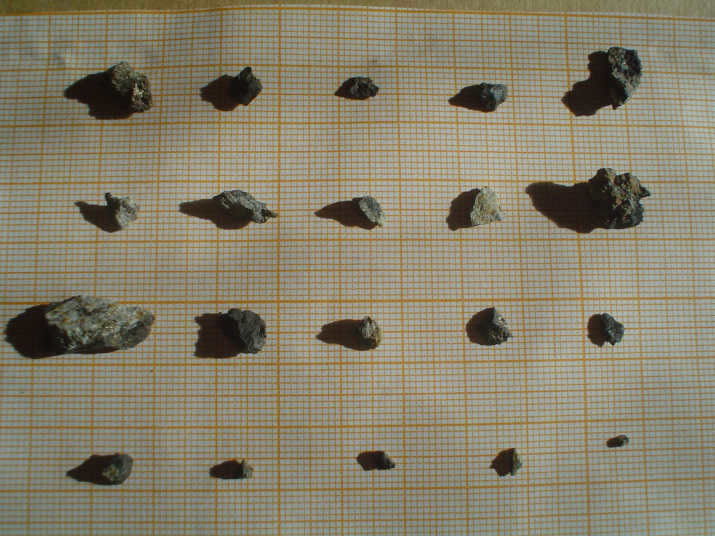
According to conservative estimates, there are still around 150 kg of pulverized extraterrestrial material located at the depths of Lake Chebarkul. The efforts of amateur searchers to find and retrieve these fragments have been largely unsuccessful, and their continued attempts are only likely to cause further disturbance. Moreover, the long-term effects on the lake’s ecosystem are far from harmless, as the sediments at the bottom of the lake become contaminated with pollutants such as nitrogen and phosphorus. This secondary pollution leads to an acceleration of eutrophication processes, resulting in the proliferation of algae and a deterioration in the overall quality of the water.
It would be beneficial to establish a designated natural area, known as a meteorite preserve, near the eastern end of the Krutik peninsula and the surrounding water area of Lake Chebarkul. This preserve would be open to all visitors, including tourists and excursionists, and would greatly enhance the recreational appeal of the lake and its surrounding region. However, it is important to enforce a ban on searching for meteorites in the lake’s sediment.
Let Lake Chebarkul always retain its captivating mystery…
Sergey Gennadyevich Zakharov
The meteorite disintegrated at an altitude of 30-50 km, scattering numerous fragments across the Chelyabinsk region. The descent of this celestial object was witnessed by hundreds of thousands of individuals. The largest fragments landed in Lake Chebarkul.
Meteorite
Meteorite (derived from the Greek word Μετεώρος, meaning “lifted into the air”) is a celestial object that has made its way to the surface of the Earth.
A meteor or meteoroid is a space object measuring up to 30 meters in size. Anything larger is classified as an asteroid.
Meteor showers occur when meteoroids enter the Earth’s atmosphere. Particularly bright meteors are known as bolides.
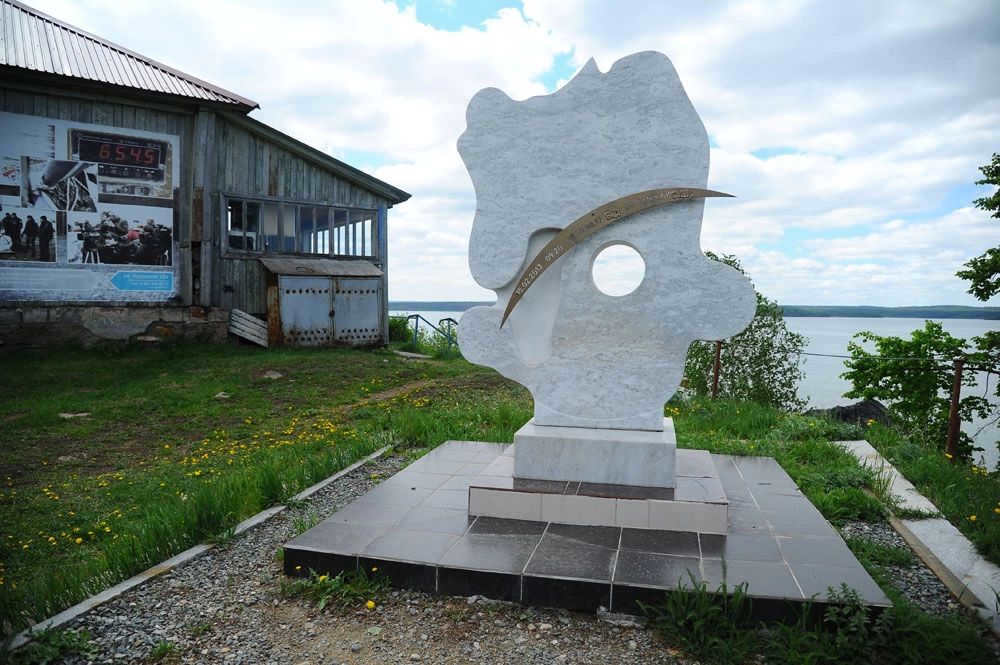
The Chebarkul Lake
To commemorate the remarkable incident of 2013, a unique sign has been placed on the lake’s shore, with its hole pointing towards the location where the meteorite fell. The exact spot where the meteorite landed, about one and a half kilometers away from the shore, is indicated by a distinctive buoy.
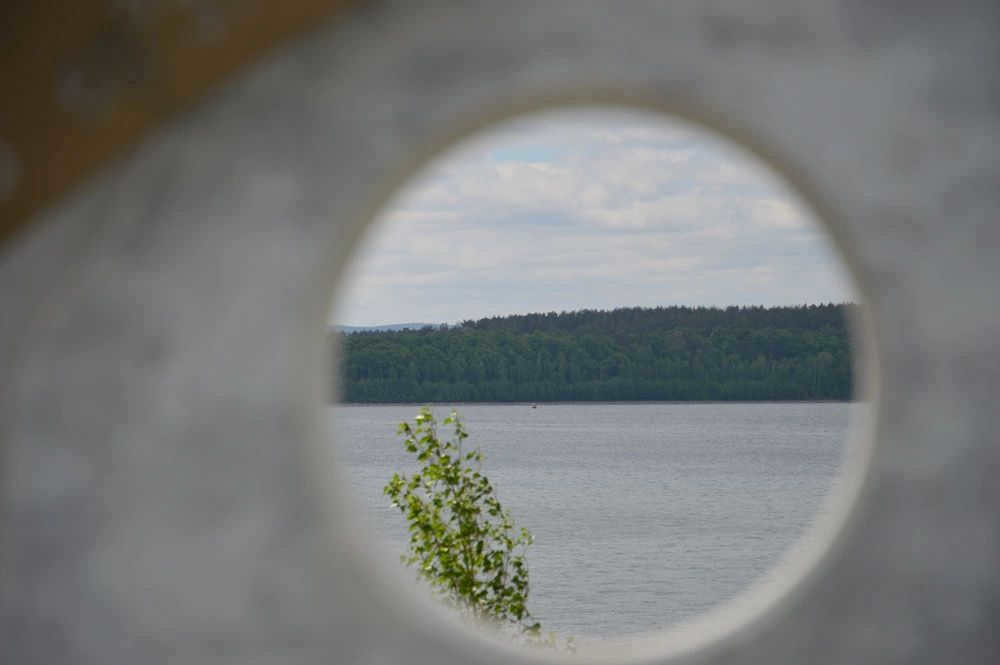
The Turkic language translates the name of the lake Chebarkul as “beautiful” or “variegated”.
Lake Chebarkul is situated on the eastern slope of the Southern Urals. It covers an area of 19.8 square kilometers, with a length from north to south of 6.1 km and from west to east of 5.1 km. Its maximum depth is 12.5 meters. The lake is fed by the rivers Yelovka, Kudryashevka, Kundurusha, and the Koelga River flows out of it.
Fishing: Carp, crucian carp, bream, tench, chebak, pike, pikeperch, burbot, yazya, and ruff can be caught in Chebarkul Lake. Fishing is possible throughout the year.
Lake Chebarkul is a popular destination for those who enjoy beach and wilderness activities, including camping. Visitors who prefer more comfortable accommodations can choose to stay at sanatoriums or recreation centers.
City of Chebarkul
In 1736, Chebarkul was established as a Cossack fortress during the Bashkir uprising of 1735-1740. The city was named after the nearby lake of the same name. The fortress served as a protector of the southeastern region of Russia and eventually became a stronghold for the Cossacks.
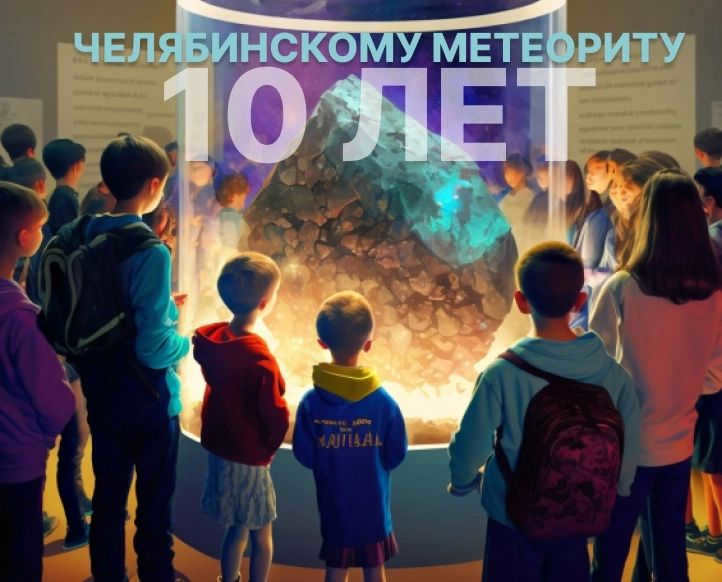

10th anniversary of the meteorite fall
February 15, 2023 marks the 10th anniversary of the meteorite fall in the Chelyabinsk region.
The Chelyabinsk region is celebrating this event on a grand scale!
- To commemorate the anniversary of the meteorite encounter, a documentary film titled “Chelyabinsk meteorite. A New Mystery” is being produced.
- There will be thematic volleyball and hockey matches.
- In the summer of 2023, there are plans to launch a tourist shuttle to Lake Chebarkul and host a festival dedicated to the 10th anniversary of the meteorite fall.
In February 2023, the Chelyabinsk State Historical Museum of the Southern Urals organized a series of lectures, quests, and excursions that focused on the impact of the meteorite.
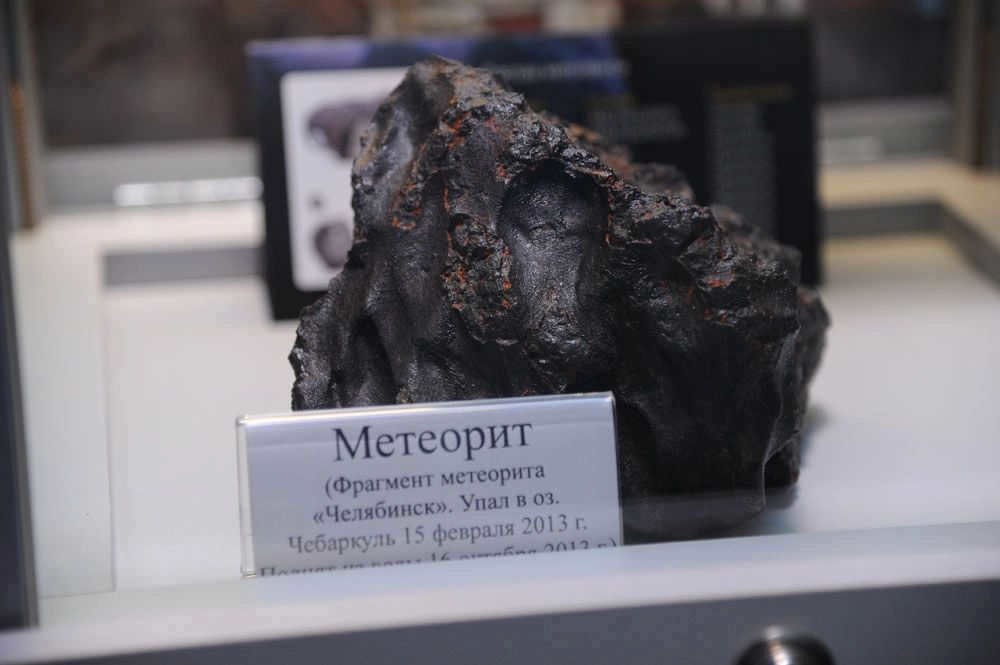
The Chebarkul Local History Museum has recently organized a unique event called “Experience the Meteorite”, allowing visitors to personally feel the weight of the extraordinary celestial visitor in their own hands.
In the Chelyabinsk region, a brand new eco-trail called “Following the Meteorite” has been established, stretching approximately 3 km along the picturesque shores of Lake Chebarkul.
“Chelyabinsk: Where Even Meteorites Choose to Land!” is the captivating name of a tourist program that offers an unforgettable journey through the Chelyabinsk region, exploring its fascinating connections to the realm of outer space.
Expert’s opinion
Sergey Arkturovich Yazev is a renowned scientist and an expert in the field of astronomy. He holds multiple prestigious positions, including the Director of the Astronomical Observatory, Associate Professor at Irkutsk State University, and Senior Researcher at the Institute of Solar-Terrestrial Physics of the Siberian Branch of the Russian Academy of Sciences. With his extensive knowledge and expertise, Dr. Yazev has made significant contributions to the scientific community.
Dr. Yazev is a respected member of the Board of the International (Euro-Asian) Astronomical Society and serves as the scientific director of the Irkutsk Planetarium Project. He is also a valued member of the Scientific Council of the Novosibirsk Planetarium. Dr. Yazev’s dedication and achievements in the field of astronomy have been recognized, and he was honored with the Irkutsk Region Governor’s Prize for Science and Technology in 2007.
“The Chelyabinsk bolide is the most powerful out of the four Russian superbolides observed in the 21st century. The initial event occurred with the Vitimsky bolide on the night of September 25, 2002, followed by the second event – the Komi bolide on October 17, 2009, and the third event – the Osinsk bolide on March 1, 2011 in the Irkutsk region. The fourth and most powerful event undoubtedly refers to the Chelyabinsk bolide on February 15, 2013. Based on the analysis of the Vitimsk meteoroid, which was estimated to be around 3 meters in size and had a mass of approximately 50 tons, we can assume that the Chelyabinsk meteoroid had a mass of up to 100 tons and dimensions of about 4 meters. It is important to note that these estimates are preliminary and require further clarification“.
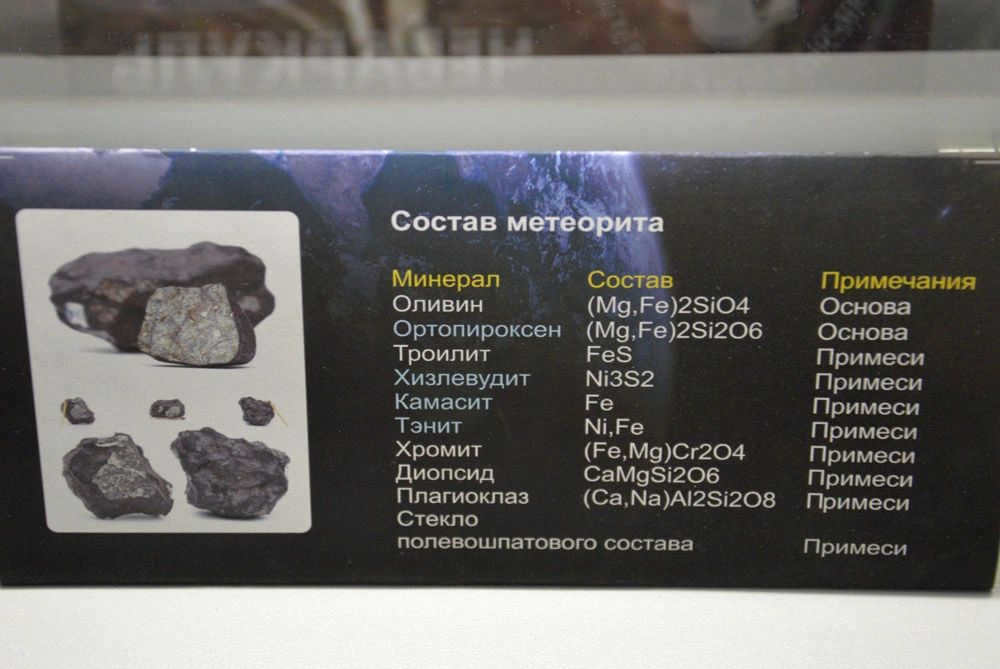
Renowned meteoroids from Russia
Well-known extraterrestrial entities in Russia.
The Tunguska meteoroid
The true nature of the Tunguska meteoroid remains a mystery. However, over a century ago, a significant event occurred in the area between the tributaries of the Podkamennaya Tunguska River. The incident continues to captivate the attention of scientists, explorers, and adventurers.
Subsequently, it was discovered that a shockwave in the taiga caused trees to be toppled in a circular area with a radius of approximately 30 km. The powerful burst of light and the stream of scorching gases sparked a forest fire, resulting in vegetation being incinerated within a radius of several tens of kilometers.
Unusual events took place worldwide for several days following the enigmatic explosion in the taiga. During the night of June 30-July 1, over 150 locations in Western Siberia, Central Asia, European Russia, and Western Europe experienced a lack of darkness: luminous clouds were clearly visible in the sky at an altitude of approximately 80 km.
Subsequently, the intensity of the “bright nights of summer 1908” significantly decreased, and by July 4, the celestial light display was mostly concluded. However, various atmospheric light phenomena were documented until July 20.
In 1911, the V.Y. Shishkov exploration team embarked on a mission led by V.Y. Shishkov. Although the team did not succeed in locating the exact location of the catastrophe, they stumbled upon a large-scale forest collapse near the Nizhnyaya Tunguska River, the cause of which remains a mystery.
In 1921, a search for a meteorite was undertaken by L.A. Kulik on his first expedition. However, in that year, it was only possible to approximately determine the location of the catastrophe. It wasn’t until 1927 that Kulik visited the actual site for the first time. During this expedition, it was discovered that the forest collapse had a radial pattern, indicating a powerful explosion. In 1925, A.V. Voznesensky, the director of the Irkutsk meteorological observatory, analyzed records from various weather stations in Siberia and concluded that the Tunguska meteorite had exploded 20 kilometers above the ground. Unfortunately, this conclusion was not given much credibility. Kulik’s expedition returned to the site in 1928 in hopes of finding meteorite debris, but they were unsuccessful. The third expedition in 1930 also yielded no results.
The explosion that occurred was shrouded in mystery as it left no visible crater. However, the vast taiga spanning over 2100 square kilometers was scorched and devastated. The majority of scientists speculate that this catastrophe was the result of a celestial body detonating several kilometers above the Earth’s surface. According to their theories, the burning question remains whether this celestial body was a fragment of a comet or a meteorite.
Despite extensive research and investigation, there is no consensus on certain unexplained phenomena surrounding this event. Notably, no trace of the fallen object, not even the tiniest fragment, has been discovered thus far.
On February 12, 1947, at 10:38 a.m., there was an extraordinary event in the sky above the Sikhote-Alin taiga. It appeared to be a massive fireball with a long trail of smoke, soaring through the air. Against the backdrop of the morning sky, this unidentified object’s bright glow and the rumbling noise it produced seemed like the firing of a powerful weapon. Little did they know at the time, but those who witnessed this spectacle were actually observing the rare and unique phenomenon of a colossal meteorite descending to Earth.
People within a 350 km radius were able to witness this event, and the sound of the impact was even heard as far as 400 km away. The meteorite fell deep within the impenetrable taiga, specifically in the vicinity of Dalnerechensk. It was only much later that this extraterrestrial visitor came to be known as the Sikhote-Alin meteorite.
The initial witnesses to the meteorite’s landing were pilots from the Far Eastern Geological Administration who happened to spot it while returning from a mission. However, it was a beekeeper named Nikolai Kushnarev who first stumbled upon the fallen meteorite. Afterward, he assisted the geologists in reaching the site, which had quickly transformed into a mixture of snow, soil, and iron. At the time, Kushnarev lived in the taiga at his hunting camp and heard a noise reminiscent of artillery fire, prompting him to investigate further. Upon arrival, he encountered a series of deep craters, uprooted and fractured trees, and fragments of iron. Despite these observations, he did not initially realize that what he had encountered was a meteorite.
Researchers have determined that the heaviest fragment of the meteorite weighed 1745 kg, and the iron precipitation occurred across an area of up to 50 square kilometers. This meteor shower was an exceptionally abundant occurrence of iron meteorites, surpassing all previously documented meteorite showers. Over one hundred tons of meteorite fragments fell, with approximately 27 tons being collected and added to the Academy of Sciences collection.
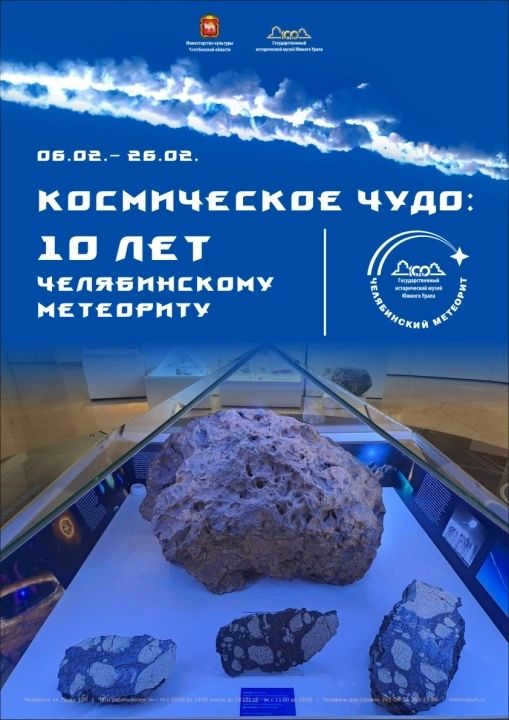
The Urals’ Meteorites
Every year, numerous small meteorites go unnoticed, while occasionally, larger stones like the Chelyabinsk meteorite make an impact. The Chelyabinsk meteorite, for instance, occurs approximately once every 20 to 30 years.
On May 17, 1990, an extraterrestrial object descended upon Bashkiria. The local publication, “Ural Worker,” reported on June 28, 1990, the following account: “During the late hours of May 17, numerous individuals residing in the central estate of the esteemed Sterlitamaksky agricultural complex observed a remarkable spectacle – a luminous, swiftly traversing sphere that illuminated the entire vicinity. The journey was accompanied by a cacophony of sound, causing the earth to quiver underfoot. Witnesses attest that upon impact with the ground, it appeared as though the surroundings momentarily ascended and descended. At daybreak, approximately one kilometer from the central estate, a 10-meter-wide and 4-meter-deep crater materialized in the field where the object landed.”
The experts from the Ural branch of the USSR Academy of Sciences gathered a number of meteorite fragments weighing up to 500 grams from the surface. Additionally, as the excavator bucket reached a depth of 8 meters, they discovered two larger metal blocks weighing over 10 kg. However, scientists believe that the majority of the meteorite is located even deeper. The meteorite has been given the name “Sterlitamak”.
Meteorite “Shirokovsky” (Perm region)
According to the information provided in the book “Meteorites of the Urals” by I.A. Yudin, on the morning of February 1, 1956, at 8:30 a.m. local time, the residents of the Nizhneturinsk district were witnesses to a rare and fascinating natural phenomenon. They observed the flight of a bolide, which is a luminous ball with a fiery tail, across the sky. The bolide traveled towards the northwest, passing over the settlements of Is, Kosya, and others. The witnesses reported hearing explosion-like sounds, as well as experiencing the rattling of glass and shaking of building walls.
The meteorite landed on the western slope of the Urals, specifically in the Shirokovskoye Reservoir. It fell about 150 meters away from the shore and managed to break through the 80 cm thick ice before sinking to the bottom of the reservoir. This created a round hole in the ice with a diameter of 42 cm and ribbed walls. Interestingly, similar to the Chebarkul meteorite incident, the search for the extraterrestrial rock by divers did not produce any successful outcomes.
Tashatkan meteorite (Tyumen region)
One of the earliest documented mentions of meteorites in the Ural region can be found in the historical account written by Semyon Remezov, a historian, cartographer, and builder. In his chronicle, Remezov describes the return of Ermak from his final expedition up the Irtysh River in 1584. During this journey, the Cossack leader and his entourage came across a large meteorite near the town of Tashatkan in the Trans-Ural region. Remezov vividly describes the meteorite as a majestic stone from the heavens, resembling a carriage with sledges, colored in a vibrant shade of scarlet. He also notes that the meteorite was known to emit cold, rain, and snow from time to time. The discovery of this celestial phenomenon left Ermak and his companions in awe of God’s power and creation.
In the summer of 1983, near the “Ozernoye” farm of the “Zauralsky” state farm, shepherd N.L. Khismatullin came across an unusual rock. In 1985, he informed the Ural Commission on Meteorites about his discovery. A member of the commission promptly visited the state farm, where V.N. Loginov, an employee, retrieved the rock and brought it to Sverdlovsk. In Sverdlovsk, the meteorite was thoroughly examined and given the name “Ozernoe”.
Ural meteorite (Kurgan region)
In 1984, the Ural Commission on meteorites received another celestial rock weighing 10 kg. This rock was discovered in a bread field near the village of Ural in the Kurgan region by a collective farmer named L.A. Orlov. The rock was dark brown, rusty, and heavy, which seemed unusual to Orlov as he had never come across anything like it before. He brought the rock to his yard and then sought clarification from scientists.
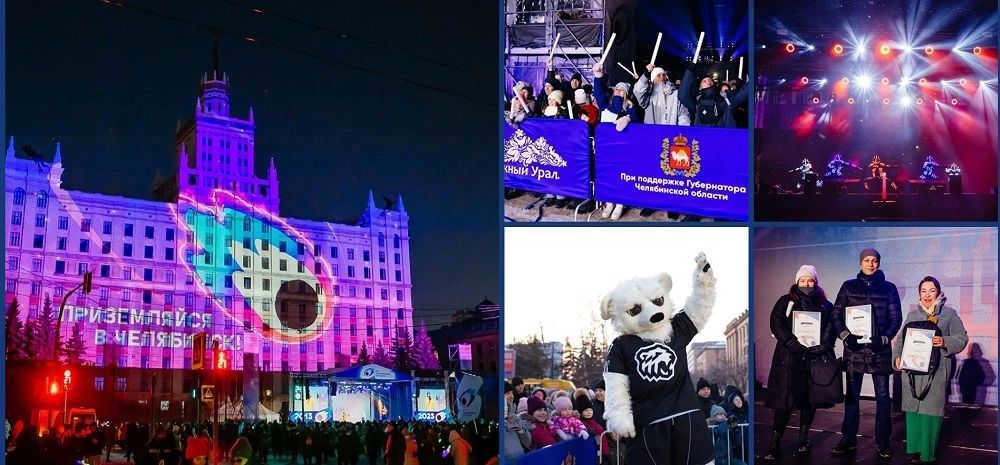
Mokrousovo Meteorite (Kurgan region)
The meteorite, known as Mokrousovo, was discovered in the Mokrousovsky district of the Kurgan region. It was found in a field by a tractor driver named V.A. Vershinin in the summer of 1968. However, it was not until 1983 that V.A. Vershinin’s father, A.G. Vershinin, sent the stone to the Ural Meteorite Commission in Sverdlovsk. A.G. Vershinin stated that the original weight of the stone was about 2 kg, but when it reached Professor Yudin, it only weighed 800 grams. It appears that pieces of debris had broken off and the extraterrestrial material had been scattered by hand. The exact time of the meteorite’s fall has not yet been determined. Professor Yudin believes that the sample had been in the ground for a long time based on its heavily oxidized surface.
In 1965, the Kargapolye meteorite was discovered on the eastern slope of the Middle Urals. It was found nestled in a meadow, concealed within a 10-15 cm deep crevice, covered in lush vegetation. The meteorite is believed to have descended from the heavens around 1942 and remained undisturbed in the field for nearly two decades. During October of that same year, nearby inhabitants witnessed a magnificent fireball streak across the sky, accompanied by thunderous sonic disturbances.
Meteorite Sverdlovsk (Sverdlovsk region)
In the late 1985, an engineer named V.F. Korotayev from Sverdlovsk visited the Kamyshlovsky district for a work assignment. While traveling near the highway, he came across a large reddish stone that seemed to have been brought there during the field clearing process. Intrigued, Korotayev decided to take the stone back to Sverdlovsk. Further analysis revealed that it was a chondrite meteorite weighing 4.5 kg. The meteorite was subsequently named Sverdlovsk.
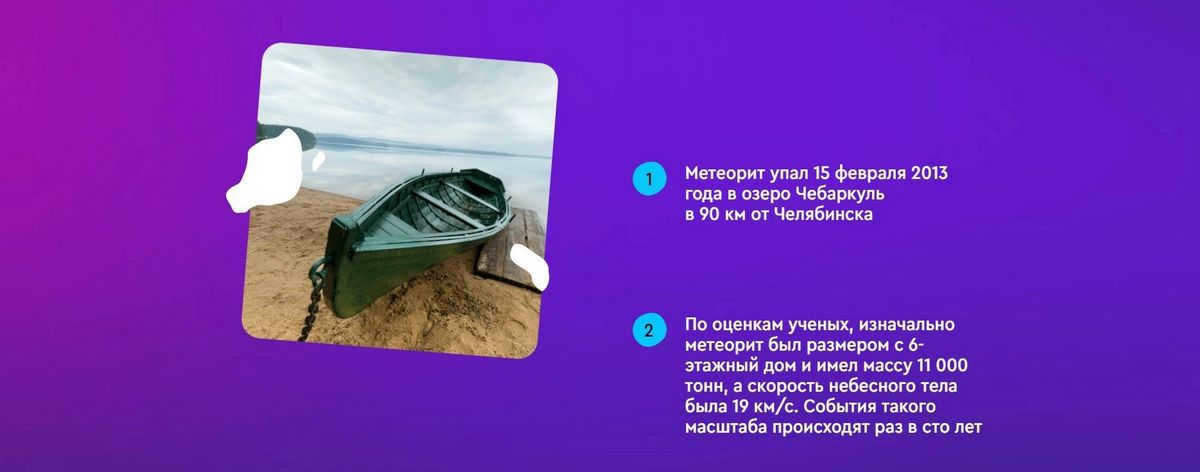
The Kunashak meteorite in the Chelyabinsk region
On June 11, 1949, a meteorite descended from the sky and landed in the vicinity of Kunashak village in the Chelyabinsk region. The event caused a slight tremor in the ground in Syserti, while in the village of Nikolskoye, Sysert district, the air wave shattered the windows of one of the houses.
One of the pieces of a meteorite fell into Lake Chebakul located 50 kilometers north of Chelyabinsk. A total of around twenty fragments of the meteorite were discovered, weighing almost 200 kg. The Kunashak meteorite is relatively young, with an age of only 720 million years.
Not only are fragments of the Kunashak meteorite preserved in Moscow, but they can also be found in museums in Chelyabinsk, Yekaterinburg, and even in the capital of Vietnam.
This celestial messenger descended in the form of a massive hailstone at 12:30 a.m. on August 30, 1887 in the former Okhansky uyezd of the Perm province. The Okha district, located within the Perm province.. Shortly after its descent, at the St. Petersburg University during a regular gathering of the Russian Physico-Chemical Society., the esteemed chemist D.I. Mendeleev notified the assembled scientists that samples of the meteorite, which had fallen in the Perm province, had been received and were already being chemically analyzed.
The circumstances surrounding the descent of the Okhan meteorite were described in some detail by the manager of the Ocher plant, Fyodor Budischev, in his memo to the head of the Ekaterinburg railroad station, D.I. Lobanov:
“…At approximately 1 o’clock in the afternoon on August 18, 1887, a meteor was spotted behind the cemetery in the village of Taborinsky, located near the Kama River in Okha uyezd, Perm province. The meteor’s descent was accompanied by a thunderous cracking noise, reminiscent of the sound produced when an iron chain is twisted onto a cast-iron pulley or when an iron sheet falls onto a cast-iron floor. According to two eyewitnesses, the meteor had the appearance of a brown bundle of oats; just before impact, there was a tremendous explosive sound, similar to a cannon volley, and a glowing streak could be seen over the Kama River, heading towards Ohansk, along with a crackling sound…”
Severo-Kolchimskiy meteorite (Perm region)
The Severo-Kolchim meteorite was discovered in 1965 during a geological expedition. It was found buried in loose soil, approximately 10-15 cm deep, nestled among the roots of an uprooted spruce tree. A seasoned geologist noticed a peculiar black, rounded stone while examining another rock formation, which starkly contrasted with the light gray sedimentary rocks surrounding it. The exact time of the meteorite’s fall remains unknown, although there are speculations that the North Kolchima meteorite may have fallen approximately 100 years ago.
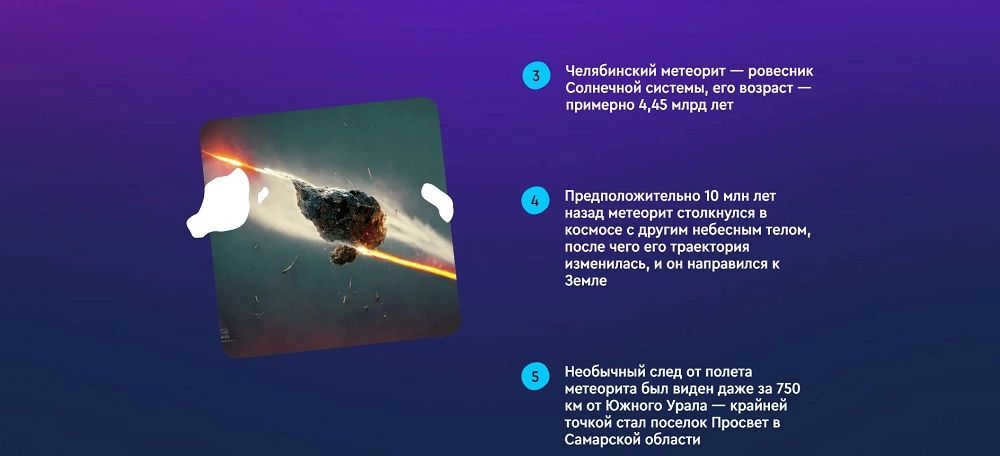
Falling of a Meteorite in the Beloretsk District (Bashkortostan)
In the early 20th century, in the Beloretsky district, near the Uzyan settlement, three workers from a factory were extracting raw materials for molding products at the “White Clay” deposit when they witnessed the descent of a celestial stone. The young worker’s wife had recently passed away, and he perceived something supernatural in this event, convincing himself that it was a divine message sent down to atone for his earthly sins.
On May 4, 1946, a meteorite fell in the vicinity of the village of Rodnik in the Karmaskalinsky district of Bashkiria. The incident occurred near the village of Rodnik in the Karmaskalinsky district of Bashkiria, known as “Red Key.” A local beekeeper and his wife were in their vegetable garden, digging for potatoes, when they suddenly heard a loud noise resembling a cannon shot. The beekeeper, who had served in the imperialist war of 1914, recognized the sound and immediately commanded his wife to take cover. However, there was no explosion. Instead, they noticed the snow in a hollow behind the vegetable garden that had not yet melted. Upon further inspection, they discovered a stone on the loosened ground, which they decided to keep hidden for safety reasons, by placing it on the stove.
The renowned geologist and local historian F.F. Chebaevsky was informed about the meteorite’s descent. He was greatly intrigued by the news and, upon obtaining information about the precise location from eyewitnesses, decided to conduct an investigation in the vicinity. The beekeeper who stumbled upon the meteorite handed over a boulder of ash-gray hue, adorned with numerous almost symmetrical round perforations measuring 0.5-2 cm in diameter. This peculiar stone weighed a total of 3960 grams. Although the homeowner pointed out the spot where this extraterrestrial rock landed, an extensive search yielded no further fragments of the celestial object.
Meteorite in Aurgazinsky district, located in the Republic of Bashkortostan
There is fascinating information regarding the discovery of a meteorite in the Aurgazinsky district. While on a work trip in the summer of 1984, journalist R.KH. Nasyrov had a meeting with I.I. Nikitin, a history teacher at Meselinskaya secondary school. During their conversation, Isaak Ivanovich shared the following details. Schoolchildren from Zhuravlevka village, located in the central farmstead of the collective farm named after Michurin, stumbled upon two stone fragments while doing field work. These fragments appeared different from the usual rocks found in the area and were later identified as a meteorite. One fragment weighed approximately 2.5-Z kg, while the other, located about a kilometer away, weighed 500 g. These fragments have a black, matte color and show signs of melting on the surface. They also have small depressions in the form of micro-holes with a diameter of 0.5-1.0 cm. As of now, the meteorite fragments have not been examined by experts.

Staroye Boriskino (Orenburg region)
The village of Staroye Boriskino, located in the Orenburg region, became famous for the Uglist meteorite that fell there on April 20, 1930. This meteorite gained attention due to the discovery of chlorite, an aqueous silicate mineral, within it. This finding was significant because it marked the first time that the presence of crystallization water in meteorites had been established. The credit for this discovery goes to the Soviet petrographer L.G. Kvasha. Subsequently, crystallization water was also found in the Orhei meteorite and other carbonaceous meteorites.

